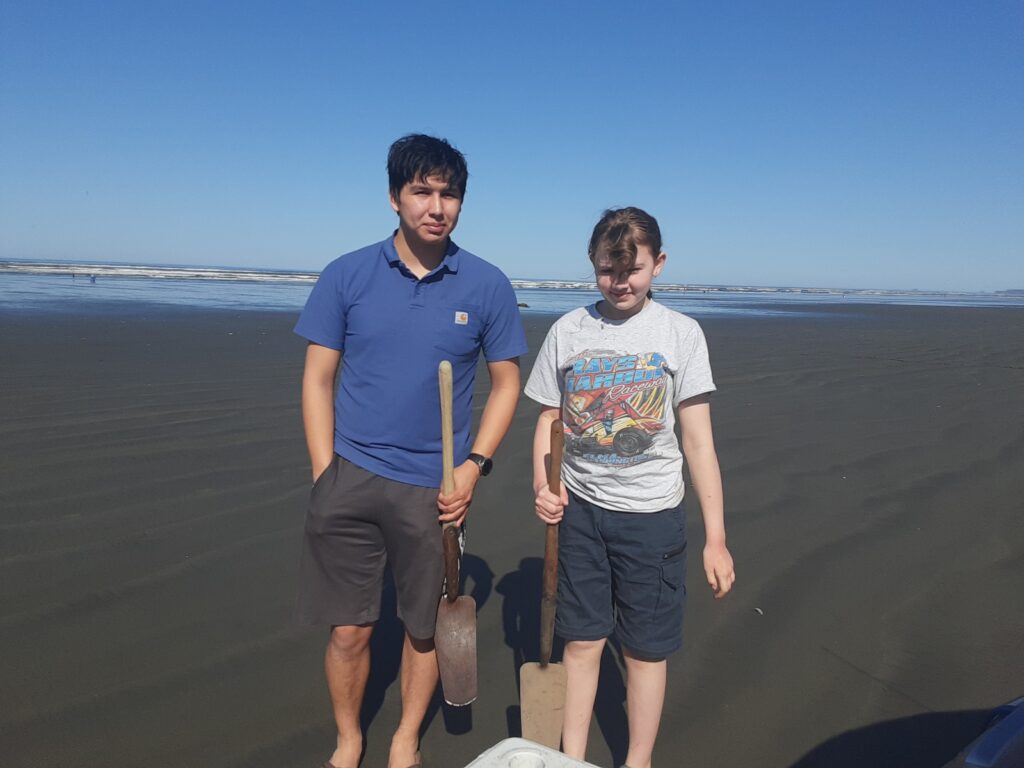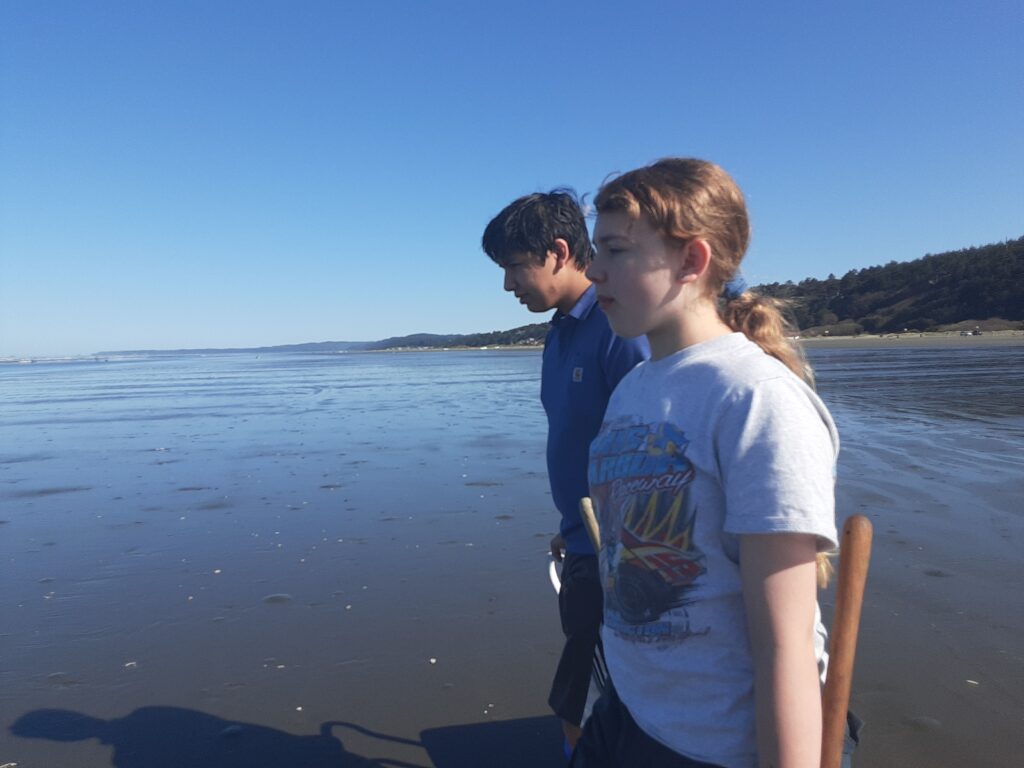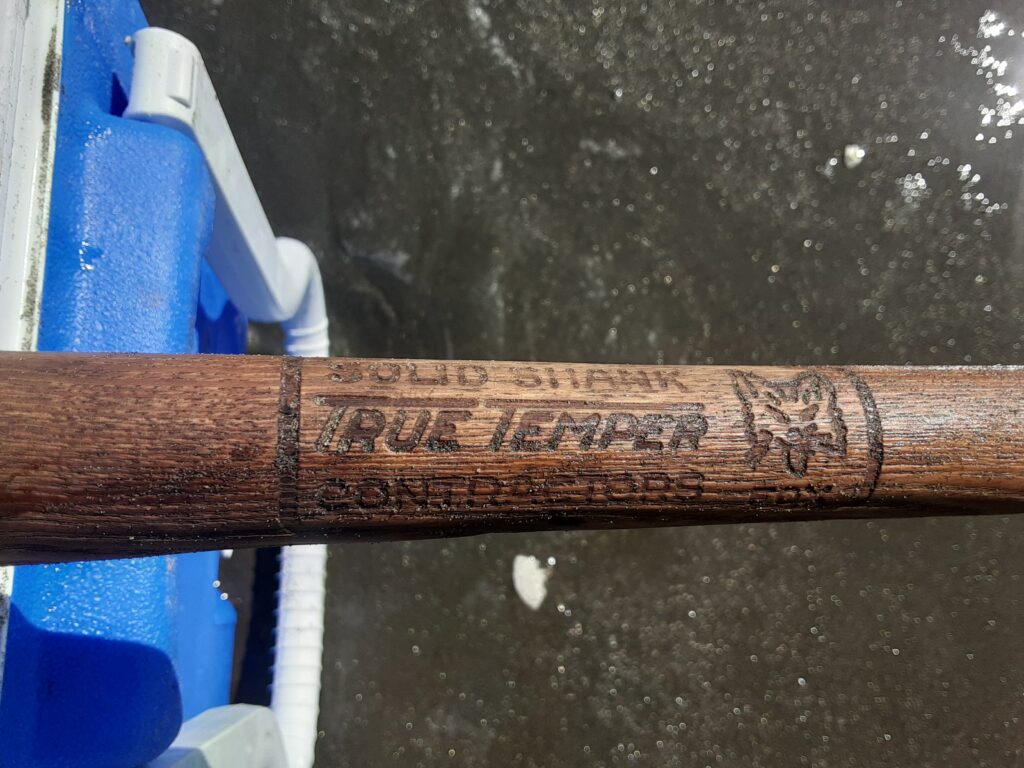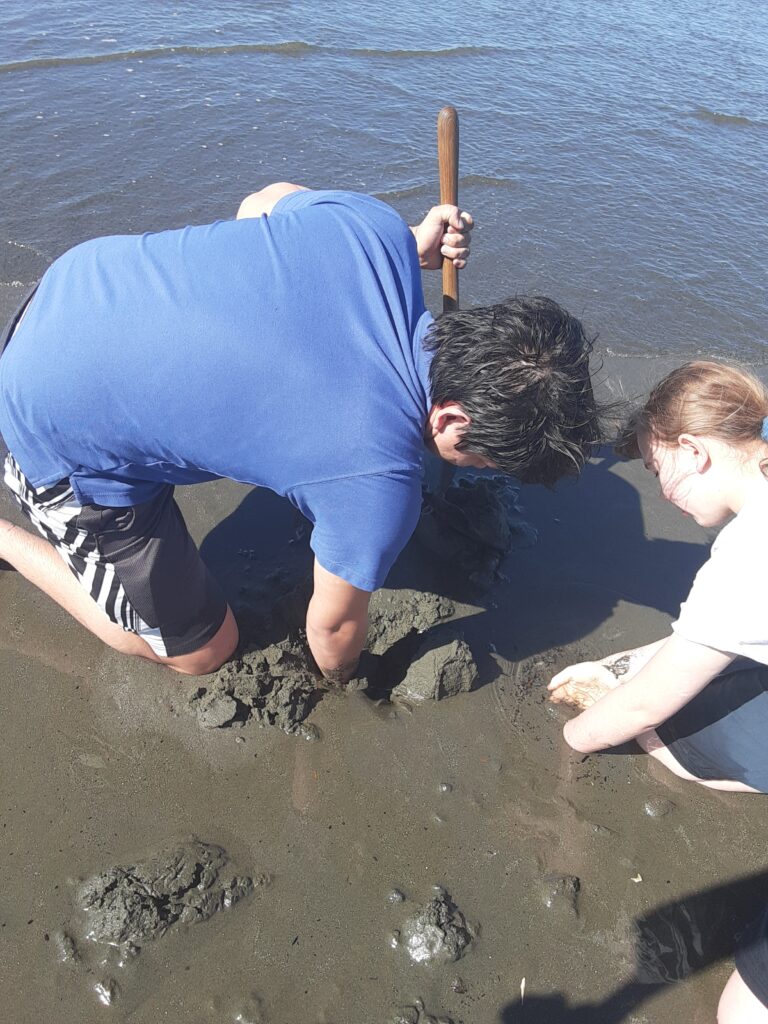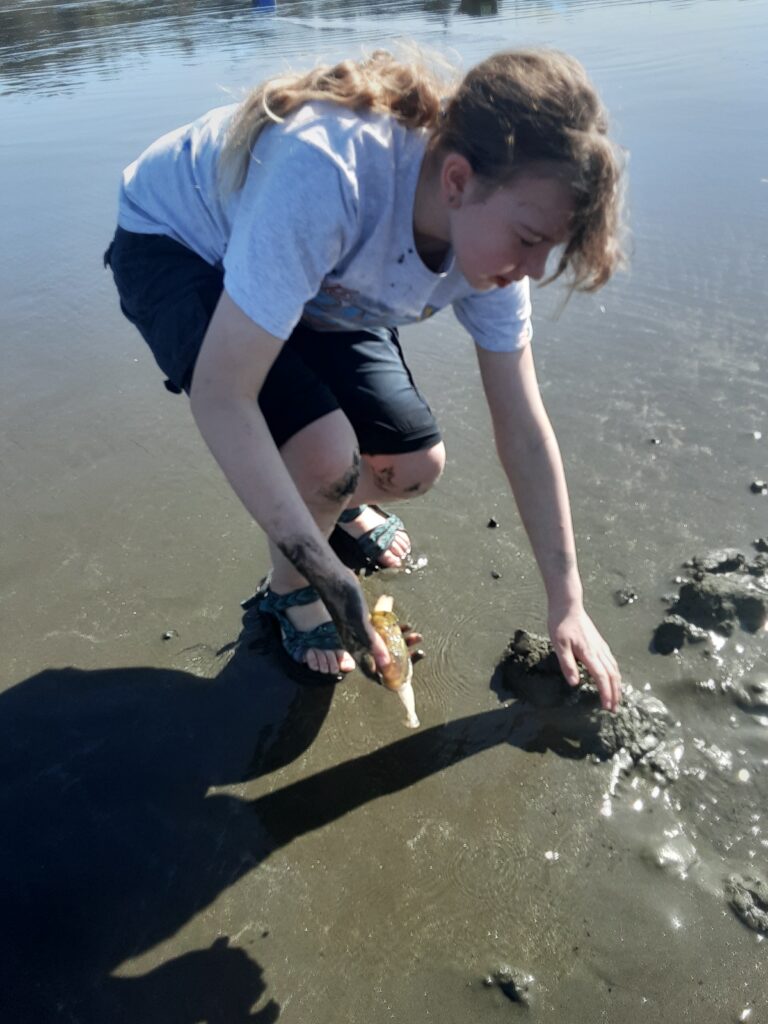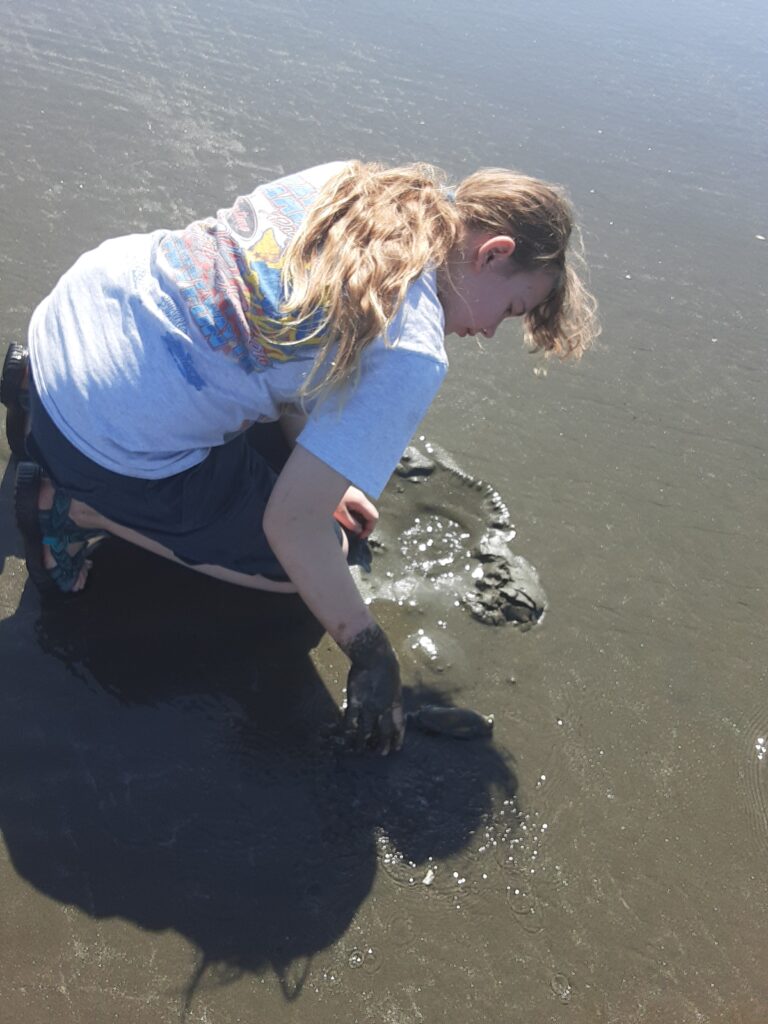Razor Clam Digging
The Pacific Razor Clam (The Pacific razor clam Siliqua Patula, is a species of large marine bivalve mollusk) is a very tasty treat that is relatively easy to harvest when the tides and weather are right. Many clam digs have been cancelled lately because of the high Domoic Acid levels so we had to go digging again as soon as the acid levels dropped. My daughter and I went digging and took this opportunity on a nice day to show my youngest daughter the basics of clam digging. Many people drive hundreds of miles and spend lots of money on motels and such to harvest them so we are blessed to be both nearby and also enrolled Indians so we can dig during the tribal digging days where there are literally thousands fewer diggers meaning that you have large sections of beach to yourself. It is a humble feeling when you realize that your ancestors have been digging the same area that you are in for centuries for subsistence food.
Since it has been a while since digging has been allowed, we were shooting in the dark as to where we should go because there were no reports of what areas were better than others. The minus tides are optimal digging, but today’s tide was a + 1/2’, but that is what we had. Several other factors such as wind, heavy rains, and heavy or rough surf also make for terrible digging conditions. The clams are still there and the problem is that they do not come to the surface of the sand where you can see their hole or indent in the sand to dig them making them virtually impossible to find.
Clam shovels are the tool of choice for those of us who dig lots of clams with the old “True Temper” clam shovels being the premium top of the line go to shovel and the cheap short bladed shovels are the worst and create a lot more work for you. The goal is to insert the shovel blade into the sand a few inches away from the clam’s hole on the ocean side and then tilt the shovel just enough to essentially scrape a hole open that is just big enough to reach into to grab the clam. This requires at least to shovelfuls with the newer short bladed shovels. The other option that all the non-locals use is a clam gun. The clam gun is inserted into the sand over the clam hole and the digger then places their finger over a vent hole on the clam gun so they can extract a cylindrical chunk of sand out with the clam in it. These involve a lot more straining of the back due to the suction that’s created and the extra weight of the sand. I had one old True Temper shovel and was lucky to find another one at a swap meet that was still brand new with the price tag for only $8. This was a score as half worn out used ones cost upwards of $100 if you can even find one.
The clams are located near the low tide water line past the sand shrimp beds, which is also a good way to differentiate the locals from the tourists who are above the waterline digging sand shrimp holes and wondering why they can’t find a clam. Sometimes the clams are showing all of on their own and other times, like today, they aren’t showing and you have to stomp around on the sand or tap the sand with your shovel to make them move. They usually shoot out some water and a hole becomes visible as soon as they start digging down to get away from the danger. My son Jeff and I dug several to show my daughter Jessica how to dig them. I did warn her that their name “Razor clam” came from their broken shells which will slice you open like a razor if you reach straight down onto them rather than grabbing them from the side or from underneath. I usually dig down about one foot with one shovel scoop so the clam is generally still about 3” above the bottom of the hole. They do dig down faster in the softer wet sand so either way you have to dig and move fast or else they will have dug halfway down to China before you reach into the hole.
Jeff dug the clam holes and had Jessica reach in to grab the clam so that she could get a good idea of about where the clams would be and how to grab them. After that she tried digging a few on her own. We got a late start and the tide was coming in so we only got about 75 clams between the three of us, but that is plenty for several tasty meals that we did not have to buy at a store. The clams are all natural too with no additives so that’s also a bonus. We do not buy into the all-organic thing, but we do try to eat as many natural healthy foods when we can so that usually means harvesting them ourselves.
Cleaning the clams is the unseen not so fun part and it takes a while to thoroughly clean them and remove all the sand. I use a knife to cut the shell off and scissors to clean the clam itself. I begin cleaning by cutting the tip of the neck off and slicing the neck open longways. The clam’s digger or boot is sliced open to remove all the contents and the gills are cut out before I rinse them in cold water to remove the residual stomach contents and sand. You can also pull the darker skin-like spots off of the outside of the clam too. Keeping the clams cold and cleaning them quickly is the key to great tasting Razor Clams. Once this is done, they are ready to be cooked.

Sometimes I will smoke and can the clams for a tasty treat that is shelf stable or I will vacuum pack and freeze them. Fresh fried is the best in my opinion and they last for about 3 days in the refrigerator so you can make meals a few nights in a row. We use an egg wash along with a mixture of Bake & Fry with flour for ours. They are cooked in a cast iron pan using a mixture of Crisco and butter with about a ¼ teaspoon of fresh garlic. Seasoning salt helps too. They cook very fast so do not leave them unattended as overcooked clams will get a tough leathery texture that makes eating them a little more difficult.
Digging clams is a good outdoor activity that you can do with the family and you can get several tasty meals for all the effort. It also helps keep you in shape and best of all you will get a chance to enjoy the great outdoors and you will have no doubts as to where your food came from or how it was processed.
